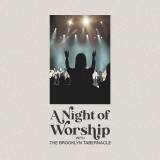Singing Alto

Singing alto is closely
related to singing contralto, which can be said to be the lowest female voice.
Operatically speaking, it is not formally defined, but specific parts are
written keeping in mind the abilities of the singer. In contemporary music, the
alto has taken the role of the sultry, seductive, unpolished voice.
1. See how low you can go
in singing alto: Using a keyboard and The mid C (C 4) as the starting point
start descending the notes. In case you don’t understand terms like C4 and mid
C, there are a variety of programs under categories like ‘tuners’ and ‘virtual
keyboard’ for download. In any case, you just need to know the sound of C4 and
you can find it anyplace else, like the piano or guitar. G3 is 3 white keys
below C4, and that is the goal, if you can hit it, you are singing alto.
2. Being comfortable within
the lower notes: If you are a mezzo soprano finding your alto abilities, it
might be difficult at first. So take it slow in singing alto, because you can
cause a muscle tear by forcing yourself. Always remember that in the beginning
stages don’t try to stay in your lower register for too long, always keep
coming up for some fresh air. With time, you will start feeling at home in your
alto parts.
3. Practice pronunciation
in the lower notes. Sometimes transition between two notes is modified by the
syllables involved in singing alto. Also practice expressing different moods at
the lower notes. It is often an overlooked point how many voice modulations we
make during normal conversation, to express our emotions. To fully exploit
singing alto, it should be as expressive. Make up cadences centered in the alto
and practice them to see if vocal attributes such as volume and pronunciation
vary adversely.
4. Planned Practice
Timings: Obviously, it is much easier to explore the lower range in the
mornings, so take advantage of it for singing alto. However, if you can hit
that note in the morning, it doesn’t mean you’ll be able to do it during choir
practice in the evening. It’s suggested that you use morning sessions to
explore your range, while keeping another session to practice songs etc. Note
however that practicing after drinking milk or tea should be avoided.
5. Proper Posture: Bad
habits die hard, so nip them in the bud. As an exercise, once in a while,
instead of focusing on the notes, try to see what the rest of your body is
doing: Are your shoulders unnecessarily tense? Are you projecting your voice
outwards? Practicing breathing exercises will help.
6. Professional Vocal
Training: There is no substitute for vocal training, especially if you have
serious aspirations. Trainers draw from their extensive experience to bring a
personalized plan of action. You’ll avoid pitfalls in singing alto, be more
motivated and will have crystallized goals to aim for.
7. Join a choir: It’s much
more fun to sing along with others. You’d be able to get a feel for the
complete musical piece, sharing the emotions of the other members as they sing.
In all, it makes you see the piece as more than just a sum of its parts. Also,
learning to perform in public is vital to a musician or singers growth.
8. Sample a variety of
music: singing alto is actually an underrated voice, unjustly of course,
relative to others. Taking a positive, there great room for creative
expression. So, listen to famous tenors, contemporaries like Sade and Alicia
Keys, or classical greats like Yvonne Minton. Learn from their styles of
singing alto.
Singing alto takes
training so that you don’t strain your voice. Once mastered, you have the
ability to extend your singing range to a variety of musical styles; some that
may have not been available to you before.
Source: SingingPros
Singing Alto
![Singing Alto]() Reviewed by Admin
on
8:00:00 PM
Rating:
Reviewed by Admin
on
8:00:00 PM
Rating:
















Post a Comment